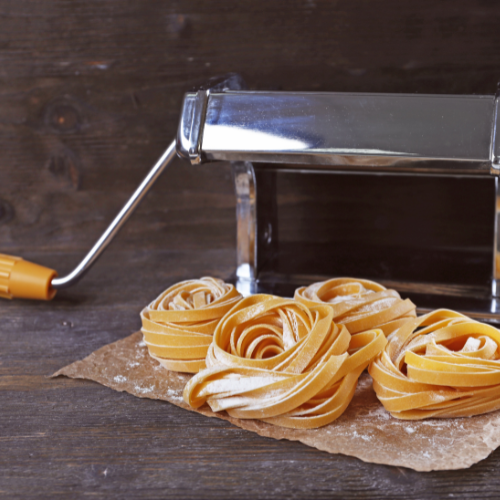How to cook halibut
Introduction
Halibut is an exquisite and versatile fish that captures the essence of gourmet dining. With its delicate flavor and firm yet tender texture, it has become a favorite choice for seafood enthusiasts around the world.
Halibut is known for its mild, slightly sweet taste that pairs well with various seasonings and cooking methods. Whether you prefer it grilled, seared, or baked, halibut offers a culinary experience that is both satisfying and sophisticated.
Brief Overview of Halibut as a Delicious and Versatile Fish
Halibut belongs to the flatfish family and can be found in both the Atlantic and Pacific oceans. It is renowned for its large size, with some species growing up to 8 feet long and weighing over 500 pounds.
This impressive size makes halibut a prized catch among fishermen. What truly sets halibut apart in the culinary world is its white, flaky flesh that lends itself beautifully to various cooking techniques.
The meat is lean yet rich in omega-3 fatty acids, making it not only delicious but also highly nutritious. Halibut's flavor profile is subtle yet distinct, often described as clean and slightly buttery.
This versatility allows it to adapt well to different flavors and seasonings without overpowering them. Whether you prefer a light citrus marinade or a bold spicy rub, halibut provides an excellent canvas for culinary experimentation.
Importance of Selecting Fresh and High-Quality Halibut for Cooking
When it comes to cooking any seafood dish, using fresh ingredients is paramount to achieving exceptional results. This principle holds true for halibut as well.
The quality of the fish directly impacts the taste and texture of your final dish. When selecting fresh halibu
Cleaning and Filleting the Fish Properly
Removing Scales and Entrails
Cleaning the halibut is an essential step in preparing it for cooking. Before getting started, make sure you have a clean workspace with a large cutting board, a sharp knife, and a sink nearby.
To remove the scales from the halibut, hold the fish firmly by its tail and scrape against the grain of the scales using a scaling tool or even the blunt edge of your knife. Work from tail to head, ensuring that all scales are removed.
Once you've removed the scales, it's time to gut the fish. Place your halibut on its side and make an incision from just below the gills down to its vent using a sharp knife.
Be careful not to puncture any organs while doing this. Then, carefully insert your fingers or a spoon into this opening and remove all entrails by gently pulling them out.
Cutting Along The Backbone to Separate Fillets
After cleaning and gutting your halibut thoroughly, it's time to separate it into fillets. Begin by placing your fish on its side with its belly facing up.
Locate where the head was attached as there will be an indentation there called "the collar." Starting at this collar just behind the pectoral fin (the fin near its head), make an incision down toward where you previously cut near the vent. Using long, smooth strokes with your knife along one side of the backbone (keeping it as close as possible without cutting through), gently separate each fillet from top to bottom while applying even pressure.
Repeat this process on both sides until you have successfully detached both fillets. Remember that practice makes perfect when it comes to filleting fish like halibut.
Take your time and keep practicing until you feel comfortable with each step of this process. With a little patience, you'll soon be able to clean and fillet halibut like a seasoned chef. Subtitle: Mastering the Art of Handling Halibut with Precision
Marinating or Seasoning Options
Traditional Lemon-Butter Marinade for a Classic Flavor Profile
When it comes to bringing out the delicate flavors of halibut, a traditional lemon-butter marinade is a tried-and-true choice that never fails to impress. This classic combination of tangy citrus and rich butter creates a perfect harmony that enhances the natural taste of the fish. To prepare this delectable marinade, start by squeezing fresh lemon juice into a bowl, ensuring that no seeds find their way in.
Melt some high-quality butter in a separate container until it becomes silky smooth and then whisk it into the lemon juice. For an added depth of flavor, mince some garlic cloves and finely chop your favorite herbs, such as dill or parsley.
Mix these aromatic ingredients into the marinade, creating an irresistible blend that will envelop the halibut in exquisite taste during cooking. To achieve optimal results with this marinade, allow the halibut fillets to soak in it for at least 30 minutes before cooking.
This allows ample time for the flavors to penetrate the meat and infuse it with their delicious essence. Patience is key here; your taste buds will thank you when they savor each succulent bite later on.
Asian-Inspired Soy-Ginger Glaze for a Tangy Twist
For those who crave bold and zesty flavors, an Asian-inspired soy-ginger glaze is just what you need to take your halibut from ordinary to extraordinary. This tantalizing combination adds an exciting twist to traditional preparations while highlighting the fish's inherent freshness and mildness.
To create this mouthwatering glaze, begin by mixing together soy sauce – opt for low-sodium variety if desired – with grated ginger for its unique spicy-sweet notes. Introduce honey into the equation to balance the savory flavors with a touch of natural sweetness.
Next, add a splash of rice vinegar for a tangy kick that ties all the elements together harmoniously. To elevate the glaze's complexity, introduce a drizzle of fragrant sesame oil, which infuses an aromatic nuttiness that will leave your taste buds yearning for more.
Once you have prepared this delightful soy-ginger glaze, generously brush it onto the halibut fillets just before cooking. The glaze will transform into a caramelized coating as it cooks, forming an irresistible crust on the fish while locking in its moisture and flavor.
Remember, these marinades are not set in stone – feel free to experiment with different herbs and spices to suit your personal preferences and explore new flavor dimensions. Trust your culinary instincts and let your taste buds guide you on this flavorful journey!
Cooking Methods for Halibut
1. Grilling for a Smoky Charred Taste: Grilling halibut is a fantastic way to impart a smoky and charred flavor to this delectable fish. To achieve optimal results, it is essential to follow a few key steps. First, preheat your grill to medium-high heat, ensuring that the grates are clean and well-oiled to prevent sticking. This will help you achieve those beautiful grill marks without tearing the delicate flesh of the halibut. Before placing the halibut on the grill, it is crucial to brush both sides of the fish with oil. This simple step helps create an excellent crust while preserving moisture within the fillets. Additionally, seasoning the fish with salt and pepper or any preferred spices can add an extra layer of flavor. When grilling halibut, timing is crucial. As a general rule of thumb, cook each side of the fish for about four to five minutes per inch of thickness. However, keep in mind that factors such as grill temperature and size of fillets may affect cooking time slightly. To ensure accuracy, use an instant-read thermometer inserted into the thickest part of the fish; when it reads 145°F (63°C), your halibut is perfectly cooked – moist and flaky!
2 . Pan-Searing for a Crispy Exterior: Pan-searing halibut allows you to achieve a delightful crispy exterior while maintaining tender and juicy flesh within. With this method, you can experience contrasting textures and flavors that elevate your halibut dish. Begin by heating a skillet over medium-high heat and adding enough oil (such as olive or vegetable) to coat its bottom evenly. It's important not to overcrowd the pan—allow enough space between each piece of seasoned halibut fillet to ensure proper searing. Once the skillet is hot, gently place the seasoned halibut fillets into the pan, skin side down if applicable. Searing each side until golden brown takes approximately three to four minutes per side. Remember to resist the urge to move or flip the fish too soon; allowing it to sear undisturbed creates that coveted crispy crust. Pro tip: For an extra burst of flavor, consider adding a knob of butter and some fresh herbs like thyme or rosemary during the last minute of cooking. The butter will help baste the fish and infuse it with a luscious richness.
3. Oven-Baking for Tender Results: Oven-baking halibut is an excellent method for achieving tender and succulent results, especially when dealing with thicker fillets or whole fish. This cooking technique ensures even heat distribution and allows you to infuse flavors into your dish. Begin by preheating your oven to around 400°F (200°C). While the oven heats up, prepare your halibut by seasoning it with salt, pepper, and any additional herbs or spices you desire. Be generous in coating both sides evenly; this will impart flavor throughout the cooking process. Next, place your seasoned halibut on a baking sheet lined with parchment paper or aluminum foil lightly greased with oil. Ensure there is enough space between each fillet so that they cook evenly without touching. Bake the halibut in the preheated oven for approximately 10-15 minutes, depending on thickness. To check for doneness, gently insert a fork into the thickest part of one fillet – it should easily flake apart and appear opaque throughout while retaining its moisture. By employing these various cooking methods – grilling, pan-searing, or oven-baking – you can savor perfectly cooked halibut dishes suited to your preference. Experimenting with different techniques will allow you to explore a range of flavors and textures, ensuring an extraordinary culinary experience every time.
A. Preheating oven to around 400°FWhen it comes to cooking halibut, the oven-baking method is a reliable technique that ensures tender and succulent results. To begin, preheat your oven to approximately 400°F (200°C) to ensure even cooking and caramelization of the fish's surface. It is crucial to have a well-heated oven before placing the halibut inside, as this will help seal in the juices and retain moisture. Once your oven has reached the desired temperature, prepare a baking dish by lightly greasing it with oil or lining it with parchment paper. This will prevent the halibut from sticking and make clean-up easier afterwards. Now that your oven is hot and your baking dish is prepared, it's time to move on to cooking the halibut using this gentle yet effective method.
Conclusion
Cooking halibut may seem like an intimidating task at first, but armed with knowledge about different methods of preparation, you can create mouthwatering dishes that will impress even the most discerning palate. Whether you choose to grill, pan-sear, or bake your halibut in the oven, each method offers a unique twist and allows for creativity in flavor profiles. Remember, selecting fresh and high-quality halibut is of utmost importance when aiming for delicious results.
By following proper cleaning techniques and marinating or seasoning options outlined in this article, you can elevate your culinary skills while savoring delicate flavors. So go ahead and embark on a culinary adventure with halibut as your trusty companion.
Explore new recipes, experiment with flavors, and enjoy the delightful experience of cooking this versatile fish. With practice comes mastery; soon enough you'll be able to whip up delectable halibut dishes effortlessly, leaving your taste buds satisfied and your guests in awe.


































Patio Grill Station